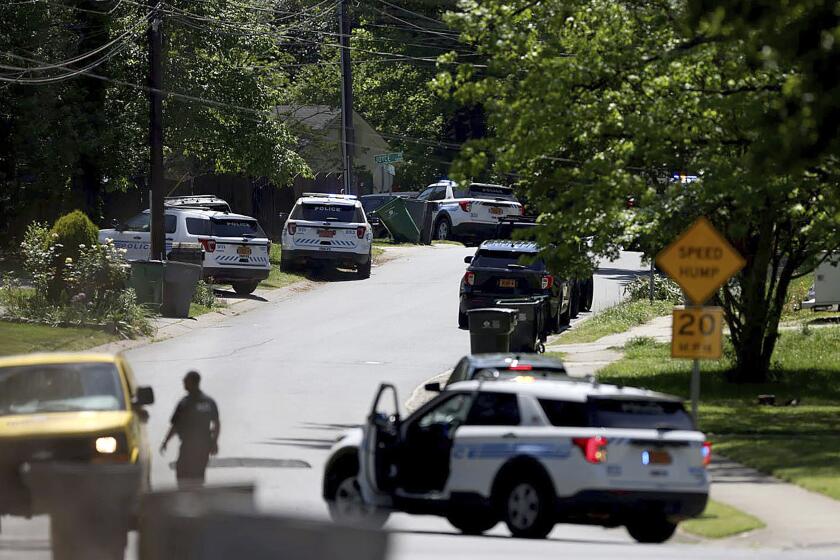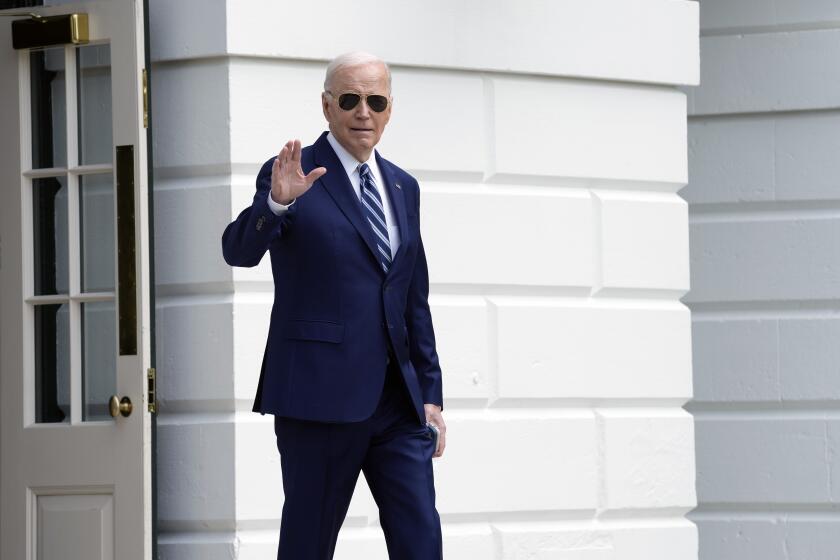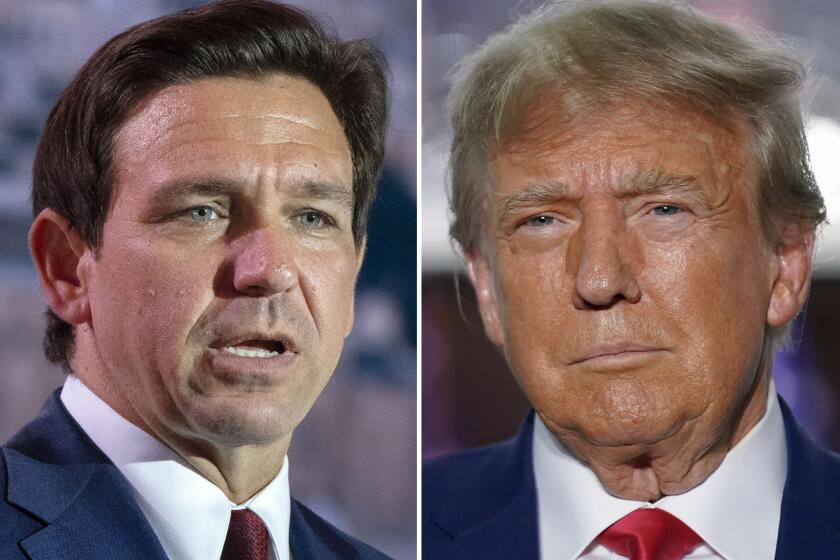Fingerprint expert takes stand in Padilla trial
A former FBI fingerprint specialist testified Thursday that terrorism suspect Jose Padilla’s fingerprints match at least seven of 45 latent prints found on an alleged application for Al Qaeda holy war training.
But Padilla’s public defenders cast doubt on the validity of both the prints and the so-called mujahedeen data form, a cornerstone of the government’s case. The form has been described by other expert witnesses as a “pledge” to fight on behalf of beleaguered Muslims abroad.
The application is the only known evidence suggesting Padilla, 36, ever went to Afghanistan, where Osama bin Laden’s terrorist network offered weapons and warfare training in the years before the Sept. 11, 2001, attacks.
Neither Padilla nor his two codefendants are on trial for any crime related to Sept. 11. They are charged with conspiracy to kill, kidnap or maim people abroad and with providing material support to terrorists.
Their defense says they were engaged in humanitarian actions in support of Muslims under siege in such places as Bosnia, Chechnya and Kosovo.
No organization name appears on the application, nor is Padilla’s name on it. The applicant is identified as “Abu Abdallah Al-Mujahir,” an Arabic phrase that means “Abdallah’s father the immigrant,” FBI translator Nancy Khouri told the jury.
Most of the application’s two dozen questions were left blank, including those on the subject’s motivation for jihad training and plans for putting it to use. There was no authorizing signature from the “military administration,” which is the only suggestion of the document’s source.
Padilla’s birthday is noted as Oct. 18, 1970, on the form, and “carpentry” is listed under a section for skills. The defendant completed a Florida trade school course in woodworking in the 1990s, the jury learned Tuesday.
John Morgan, the fingerprint analyst, who is now with the Secret Service, testified that he examined the application form in August -- more than six years after Padilla allegedly filled it out and 5 1/2 years after the FBI obtained it.
Anthony J. Natale, lead attorney for Padilla, questioned the thoroughness of the evaluation, asking Morgan why he hadn’t sought a broader set of the defendant’s prints, as is customary in major cases. Morgan told the court he had asked for the extra fingertip, palm and side prints so he could analyze 10 latent impressions that couldn’t be matched to Padilla’s 10-digit print card; the government never delivered them, Morgan said. Assistant U.S. Atty. John Shipley conceded outside the presence of the jury that he had never sought them.
Padilla was accused after his May 2002 arrest of plotting to set off a radioactive “dirty bomb” in a U.S. city. Those claims were dropped when, after 3 1/2 years in a U.S. Navy brig, Padilla was transferred to the federal court system in November 2005.
U.S. District Judge Marcia Cooke ruled before trial started that Padilla’s time in military custody wasn’t relevant to this case. But Natale hinted that he might bring that era to light when he suggested that Padilla’s prints “could have been put on the document anytime during the 3 1/2 years he was detained.”
Morgan said 24 of the fingerprints on the form were “conclusively” not Padilla’s. He had not been asked, he said, to look for prints that might have been left by a CIA agent and an FBI legal attache who have already testified to handling the document.
Kevin McCann, an FBI management and program analyst, said he scanned the form into a newly created intelligence database in April 2002. The alleged jihad applications were among masses of documents that “inundated” FBI headquarters after Sept. 11, he testified.
Defense attorney Orlando do Campo demanded the government prove that the document had been protected from tampering between its December 2001 arrival in Washington and its introduction to the database more than three months later.
Cooke expressed concern that the government’s key piece of evidence hadn’t been accounted for during the four years and four months between the time it was scanned by the FBI and the fingerprint analysis. She told prosecutors to demonstrate an unbroken chain of possession before resting their case.
*
More to Read
Start your day right
Sign up for Essential California for news, features and recommendations from the L.A. Times and beyond in your inbox six days a week.
You may occasionally receive promotional content from the Los Angeles Times.







